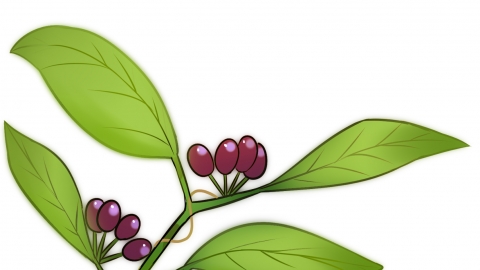Are Smilax glabra and Poria the same?
Generally speaking, although Smilax glabra and Poria have similar names, they are two different traditional Chinese medicinal materials, differing in their sources, appearance, functions, therapeutic applications, and suitable populations. The specific differences are as follows:

1. Source
Smilax glabra is the dried rhizome of Smilax glabra Roxb., a plant from the Liliaceae family, commonly found growing on hillsides or under forest shade. Poria, on the other hand, is the dried sclerotium of the fungus Poria cocos (Schw.) Wolf, belonging to the Polyporaceae family, usually parasitizing on the roots of pine trees.
2. Appearance
Smilax glabra appears as irregularly shaped pieces with nodular prominences, having a surface color of yellowish-brown or grayish-brown. The exterior features hard residual root bases, and its cross-section is淡reddish-brown or nearly white. Poria is typically globular, oval, or irregularly shaped, with a thin, rough outer layer ranging from brownish to dark brown. The interior is white or pale pinkish, occasionally light red.
3. Functions and Properties
Smilax glabra has a sweet and bland taste, with a neutral property. It is known for its significant effects in clearing toxins, removing dampness, and promoting joint mobility. Poria also has a sweet and bland taste, with a neutral to slightly cold nature. Its primary function is promoting diuresis and eliminating dampness, facilitating the metabolism of bodily fluids and expelling excess water through urine to alleviate conditions such as edema and difficult urination.
4. Main Therapeutic Applications
Smilax glabra is commonly used to treat conditions such as limb contractures, joint and bone pain caused by mercury poisoning or syphilis, damp-heat urinary tract disorders, leukorrhea, abscesses, scrofula, scabies, and癣. Poria is primarily used for edema with reduced urine output, phlegm accumulation with vertigo and palpitations, spleen deficiency with poor appetite, loose stools or diarrhea, mental restlessness, and insomnia due to palpitations.
5. Suitable Populations and Origin
Smilax glabra is more suitable for individuals with internal accumulation of damp-heat, such as those suffering from damp-heat jaundice, eczema, or urinary tract infections. Poria is better suited for individuals with spleen deficiency complicated by dampness and impaired water metabolism, such as those with chronic nephritis, indigestion, or neurasthenia.
In daily life, when using these two herbs, one should follow medical advice, selecting them appropriately based on individual health conditions and illness to avoid self-medicating, which may affect treatment efficacy or cause adverse reactions.







